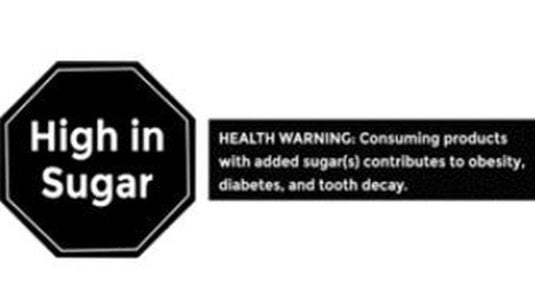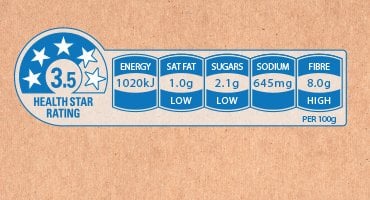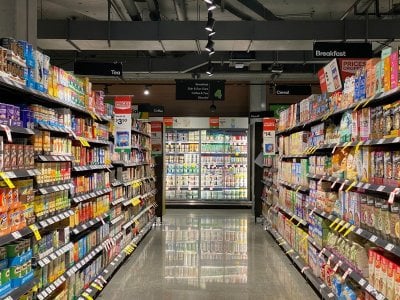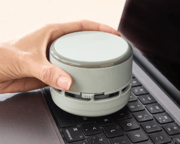Experts push for food-labelling changes to spur healthier choices among Australians
- Replies 12
We, as a society, are eating more processed food than ever.
Ultra-processed foods are everywhere — in grocery stores, petrol stations, take-away restaurants, and online stores. It's easy to see how our dietary choices can get warped with this much accessibility.
A study in 2019 found that almost half of Aussies’ diets are made up of these foods, which are usually high in calories, sodium, and added sugars.
They lack many necessary nutrients our bodies need and often pack in extra chemicals and preservatives that harm our health.
With this in mind, it is no surprise that there are calls for improving how food is labelled to encourage Aussies to make healthier food choices.
Another more recent study conducted by Deakin University researchers revealed that large, graphic warning labels on the front of packaging are more effective in dissuading people from buying ultra-processed foods.

Chris Dubelaar, Professor of Marketing at Deakin University and co-author of the study published in the Journal of Public Policy and Marketing, said the results align with earlier observations that warning signs are a good option for making people make healthier food choices,
‘A basic food label that tells you something is not good for you doesn't work,’ Dubelaar said. ‘Unless it has a big warning label on the front of that pack that explicitly says, “This is going to hurt you”, people will ignore it.’
The study led by Associate Professor Natalina Zlatevska says the results highlight the need for a more effective food labelling system in place for Australia.
‘We need to make it very clear when food is bad for you,’ she said.
‘This is part of a bigger issue around health literacy. Most food labels have too much information that is hard for people to decipher. Complex labels don't work that well because people don't understand them.’
‘Obesity is a global public health crisis, and post-pandemic obesity levels are at record highs. We need to help people make a better decision about their food choices.’
The Australian Bureau of Statistics says two-thirds of adults aged 18 and up are overweight or obese. This amounts to roughly 12.5 million people nationwide.
Being overweight or obese increases the probability of contracting many chronic conditions, like cardiovascular disease, asthma, chronic kidney disease, dementia, diabetes, and cancer.
‘The current labels don't work, and evidence-backed action is needed now,’ Zlatevska said.

Australia currently has the Health Star Rating System, wherein shoppers can gauge an item’s healthiness by checking how many stars it has out of a maximum of five, with 5 stars being the highest health rating.
Despite being hailed as a step in the right direction, the health star system has been criticised over the years for a number of reasons.
For one, it’s voluntary. Manufacturers can unilaterally decide when and how to use it, leading to observations and suspicions or ratings that are untrue.

As a result, it was estimated that only 20 per cent of food items in Australia (and New Zealand) had star ratings.
Critics also pointed out that the ratings can’t be used for cross-product comparisons due to how they factor in ingredients.
For example, two different products — say, orange juice and a carton of milk — rated four stars by their respective manufacturers can be widely different regarding healthiness despite the similar ranking.
Consumer advocacy group CHOICE called for changes to the Health Star Rating System in 2019, including making it mandatory for manufacturers.
They also pointed out that the system doesn’t really do anything to disincentivise the higher sugar and salt content of items, thereby encouraging manufacturers to continue with the practice that puts more consumers at risk.
In relation to this development, Food Standards Australia New Zealand is also considering the inclusion of sugar information on packaged foods’ nutrition labels.
If you have time, you might also want to check out why two orange juices at one Coles displayed different health star ratings despite coming from the same manufacturer.
A similar case happened last year with one Woolworths shopper’s purchase of a store-brand fruit juice, but he didn’t buy the store’s explanation.
So, what are your thoughts on this? Should supermarkets place more noticeable warnings on ultra-processed foods to encourage customers to opt for healthier options? Let us know in the comments below.
Ultra-processed foods are everywhere — in grocery stores, petrol stations, take-away restaurants, and online stores. It's easy to see how our dietary choices can get warped with this much accessibility.
A study in 2019 found that almost half of Aussies’ diets are made up of these foods, which are usually high in calories, sodium, and added sugars.
They lack many necessary nutrients our bodies need and often pack in extra chemicals and preservatives that harm our health.
With this in mind, it is no surprise that there are calls for improving how food is labelled to encourage Aussies to make healthier food choices.
Another more recent study conducted by Deakin University researchers revealed that large, graphic warning labels on the front of packaging are more effective in dissuading people from buying ultra-processed foods.

According to a recent study, warning labels like this more effectively convince people to make healthier food choices. Image Credit: Deakin University
Chris Dubelaar, Professor of Marketing at Deakin University and co-author of the study published in the Journal of Public Policy and Marketing, said the results align with earlier observations that warning signs are a good option for making people make healthier food choices,
‘A basic food label that tells you something is not good for you doesn't work,’ Dubelaar said. ‘Unless it has a big warning label on the front of that pack that explicitly says, “This is going to hurt you”, people will ignore it.’
The study led by Associate Professor Natalina Zlatevska says the results highlight the need for a more effective food labelling system in place for Australia.
‘We need to make it very clear when food is bad for you,’ she said.
‘This is part of a bigger issue around health literacy. Most food labels have too much information that is hard for people to decipher. Complex labels don't work that well because people don't understand them.’
‘Obesity is a global public health crisis, and post-pandemic obesity levels are at record highs. We need to help people make a better decision about their food choices.’
The Australian Bureau of Statistics says two-thirds of adults aged 18 and up are overweight or obese. This amounts to roughly 12.5 million people nationwide.
Being overweight or obese increases the probability of contracting many chronic conditions, like cardiovascular disease, asthma, chronic kidney disease, dementia, diabetes, and cancer.
‘The current labels don't work, and evidence-backed action is needed now,’ Zlatevska said.

There is a growing call for better food labelling practices as some deem current measures in place inadequate. Image Credit: Health Star Rating System
Australia currently has the Health Star Rating System, wherein shoppers can gauge an item’s healthiness by checking how many stars it has out of a maximum of five, with 5 stars being the highest health rating.
Despite being hailed as a step in the right direction, the health star system has been criticised over the years for a number of reasons.
For one, it’s voluntary. Manufacturers can unilaterally decide when and how to use it, leading to observations and suspicions or ratings that are untrue.
Key Takeaways
- Researchers from Deakin University have called for large labels warning products are high in sugar, fat or salt to be displayed on food packaging.
- People are likely to ignore basic food labels, which state a product is unhealthy, according to the research paper.
- Australia currently has the Health Start Rating System, but it has been criticised in the past as being inadequate for people to make healthy food choices.
- Food Standards Australia New Zealand is considering including added sugar information on nutrition labels for packaged foods.
Critics also pointed out that the ratings can’t be used for cross-product comparisons due to how they factor in ingredients.
For example, two different products — say, orange juice and a carton of milk — rated four stars by their respective manufacturers can be widely different regarding healthiness despite the similar ranking.
Consumer advocacy group CHOICE called for changes to the Health Star Rating System in 2019, including making it mandatory for manufacturers.
They also pointed out that the system doesn’t really do anything to disincentivise the higher sugar and salt content of items, thereby encouraging manufacturers to continue with the practice that puts more consumers at risk.
In relation to this development, Food Standards Australia New Zealand is also considering the inclusion of sugar information on packaged foods’ nutrition labels.
If you have time, you might also want to check out why two orange juices at one Coles displayed different health star ratings despite coming from the same manufacturer.
A similar case happened last year with one Woolworths shopper’s purchase of a store-brand fruit juice, but he didn’t buy the store’s explanation.
So, what are your thoughts on this? Should supermarkets place more noticeable warnings on ultra-processed foods to encourage customers to opt for healthier options? Let us know in the comments below.








